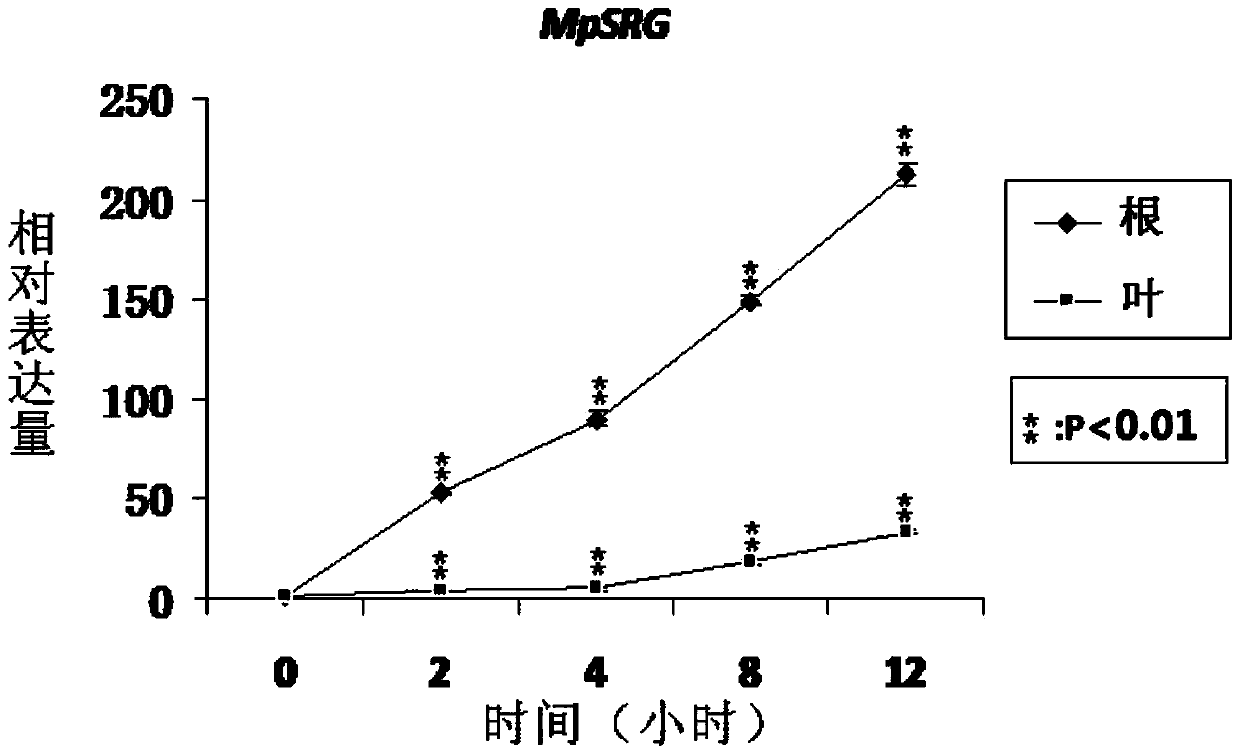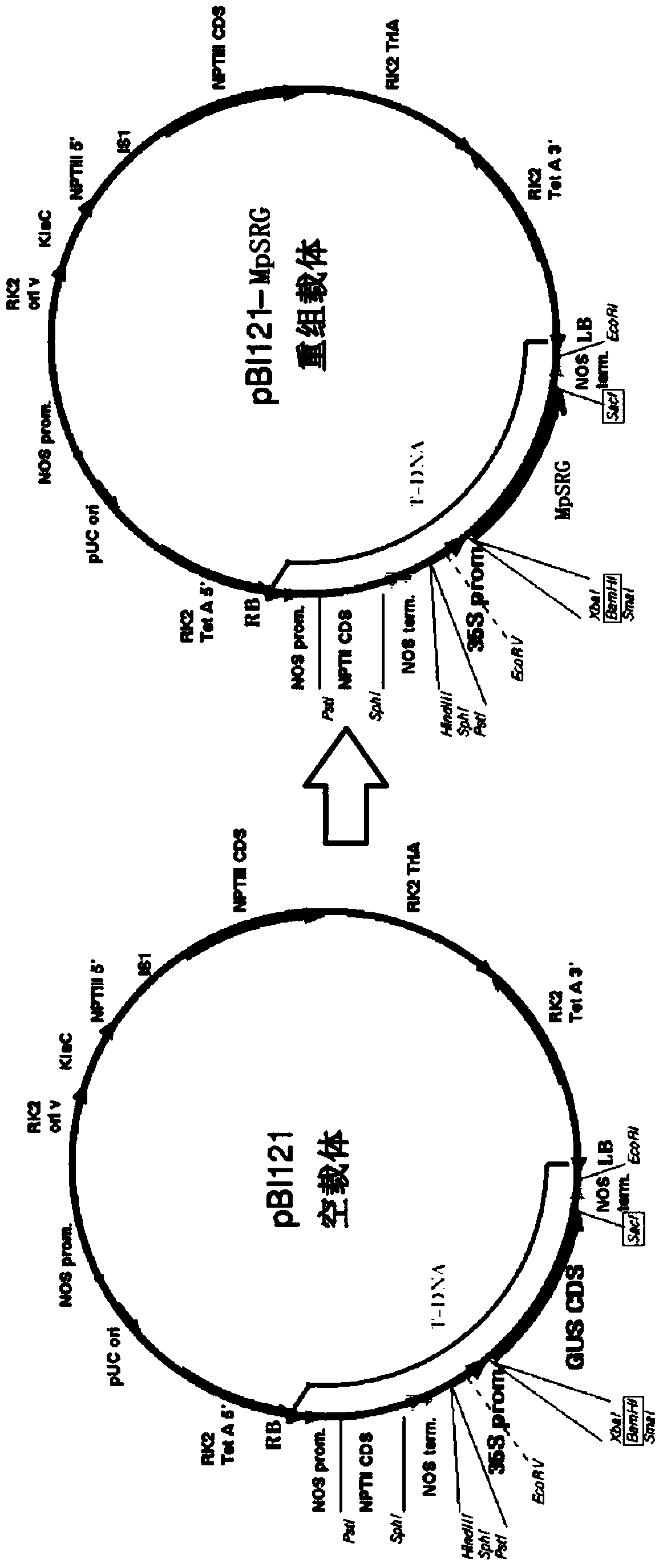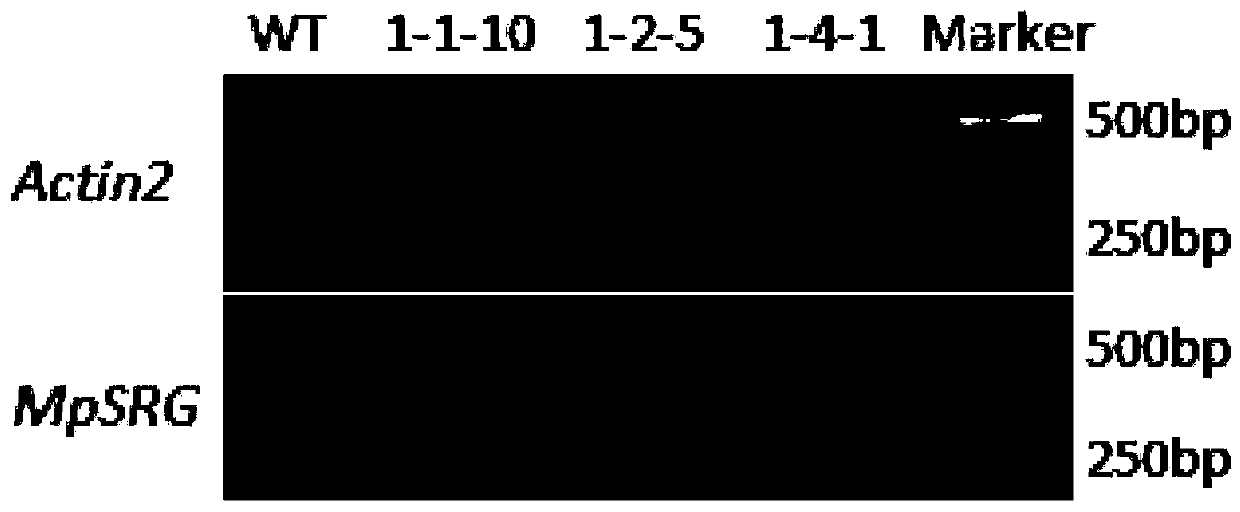Pongamia pinnata stress tolerance relative gene MpSRG as well as coded protein and application thereof
A technology of water yellow skin and stress resistance, which is applied in the fields of application, genetic engineering, plant gene improvement, etc., and can solve the problem of not being cloned from water yellow skin
- Summary
- Abstract
- Description
- Claims
- Application Information
AI Technical Summary
Problems solved by technology
Method used
Image
Examples
Embodiment 1
[0038] Example 1 Screening of the gene encoding the stress tolerance-related protein MpSRG of Pseudomonas chinensis and its full-length cDNA clone
[0039] Use seawater (equivalent to 30‰NaCl) and fresh water to treat the one-month-old plants of P. japonicus, then select the root and leaf samples treated for 2, 4 and 8 hours for RNA extraction, and then mix the RNA at the three time points in equal amounts , four libraries were constructed (namely root freshwater treatment, root seawater treatment, leaf freshwater treatment and leaf seawater treatment) and then performed Illumina sequencing. Finally, the sequencing results were assembled and spliced to obtain more than 100,000 unigene sequences. The gene was selected according to the following three principles: first, the expression of the gene was significantly up-regulated after salt stress; second, the sequence with the highest homology of the gene came from legume species; third, the genes with the highest similarity to ...
Embodiment 2
[0043] Example 2 The expression characteristics of MpSRG gene of Pygnus chinensis under the treatment of salt stress
[0044] Divide 20 one-month-old seedlings with uniform growth into 5 groups (4 plants in each group) on average, and pour 30‰ NaCl solution to these five groups of seedlings for 0, 2, 4, 8, and 12 hours respectively. The top young leaves and roots of each group of plants were quickly taken and stored at -80°C after quick freezing in liquid nitrogen, and the roots and leaves were weighed to the same weight. Total RNA was extracted by Trizol method and reverse transcribed into cDNA. Real-time fluorescent quantitative PCR was carried out to analyze the expression of the MpSRG gene under salt stress, and the primers were as follows:
[0045]
[0046] The result is as figure 1 As shown, the expression of MpSRG gene was obviously induced by NaCl stress. After salt stress, the expression level of MpSRG gene increased in both roots and leaves, and did not decreas...
Embodiment 3
[0047] Example 3 Construction of MpSRG Recombinant Plant Expression Vector PBI121-MpSRG
[0048] For the construction process of MpSRG recombinant plant expression vector PBI121-MpSRG, please refer to figure 2 .
[0049] Using the cDNA obtained by reverse transcription of the total RNA of Pumice chinensis as a template, use specific primers containing BamHI and SacI linker sequences to PCR amplify MpSRG (sequence 1 in the sequence listing); then BamHI and SacI double-enzyme digest the PCR product and plasmid pBI121 , recovered, ligated with T4DNA ligase, and inserted MpSRG forward into the CaMV35S promoter of the plant expression vector PBI121 between the BamHI and SacI restriction sites to obtain the recombinant plant expression vector PBI121-MpSRG.
[0050] The specific primer sequences containing BamHI and SacI linker sequences are as follows:
[0051] 5'-CCGGGATCCATGCTTCACACAATCAAAACG-3'
[0052] 5'-CACGAGCTCTTAAGCATTAGCGTTGGTCC-3'.
PUM
 Login to View More
Login to View More Abstract
Description
Claims
Application Information
 Login to View More
Login to View More - R&D
- Intellectual Property
- Life Sciences
- Materials
- Tech Scout
- Unparalleled Data Quality
- Higher Quality Content
- 60% Fewer Hallucinations
Browse by: Latest US Patents, China's latest patents, Technical Efficacy Thesaurus, Application Domain, Technology Topic, Popular Technical Reports.
© 2025 PatSnap. All rights reserved.Legal|Privacy policy|Modern Slavery Act Transparency Statement|Sitemap|About US| Contact US: help@patsnap.com



